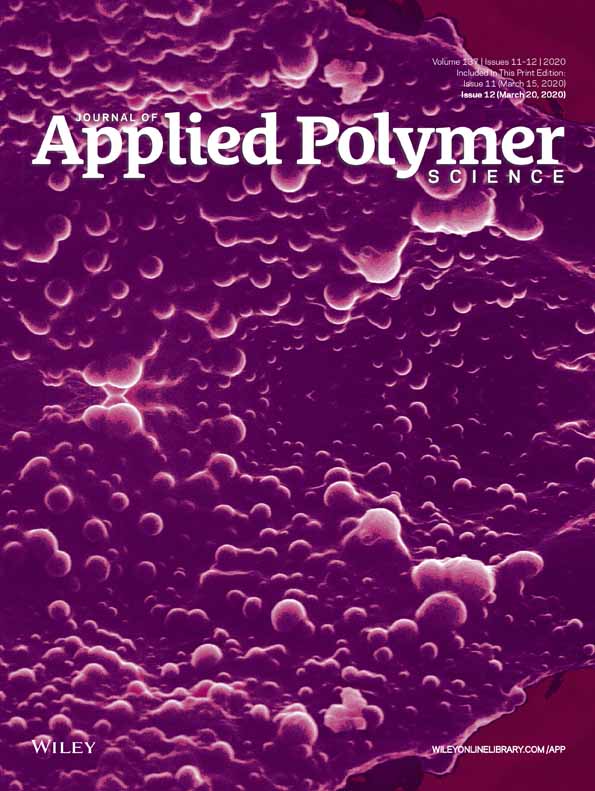Green facile fabrication of polyimide by microwave-assisted hydrothermal method and its decomposition dynamics
ABSTRACT
A microwave-assisted hydrothermal technique was proposed in this work to fabricate polyimide using ethanol as sole solvent, and the decomposition dynamics of the resulting polyimide was also investigated. The preparation process involved that the ammonium carboxylic ester intermediates could be able to cyclize de-alchoholation, thus generating imide ring structures. The obtained polyimide exhibited excellent thermal properties. Specifically, the glass transition temperature of the polyimide was around 267.8 °C, and it begun to decompose gradually from about 550 °C. A novel method was employed to choose the dynamics model according to the linear correlation between g(α) and 1/β. As a result, the three-dimensional diffusion (Jander) model was much more suitable for the thermal decomposition process of the resulting polyimide, and the thermal decomposition mechanism was explained by using the model. The apparent activation energy (E a) values calculated by Flynn–Wall–Ozawa and Kissinger methods were similar showing the same variation tendency. Furthermore, a series of fitting polynomials for E a and pre-exponential factor (A) values were achieved to reflect the trend more accurately. The dynamics results revealed that the decomposition process was complex and could be regarded as multistep reactions. © 2019 Wiley Periodicals, Inc. J. Appl. Polym. Sci. 2020, 137, 48484.




